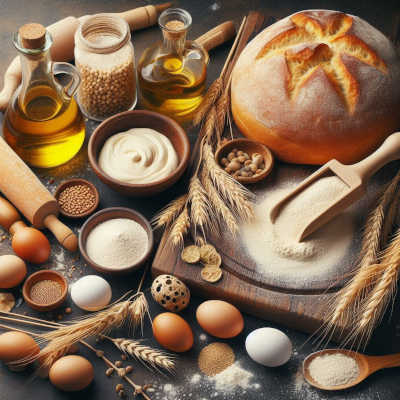
Yeast is one of the oldest cooking ingredients, it was discovered several thousand years as a leavening or rising agent. There's a few different types of yeast that can be used in bread-making, but they roughly fall into two categories: Fresh yeast and dried yeast.
Dried Yeast
Dried yeast is the most common form of yeast available, it is most-likely what you'll find at your local shop. It is a yeast that is prepared and then freeze-dried such that it will re-activate when it comes into contact with water. Sometimes also referred to as fast acting.
Most bread-making recipes assume dried yeast and any measurements will nearly always assume you're using it. Sometimes dried yeast comes in packets, one packet is roughly 7g of fast acting dried yeast. If a recipe calls for a packet of instant yeast, assume 7g of dried yeast.
I use dried yeast myself some of the time, as fresh yeast is not so easy to get hold of.
Fresh yeast
The origins of yeast and beer go back many thousands of years, where the discovery of beer and introduction of yeast into flour led to two important discoveries; that a drink that sanitised water (containing alcohol) could be made, and that dough would rise quicker when yeast was present.
Some fresh yeasts come in a crumbly block where you crumble the right amount, and some come in a soft block where you slice the amount needed and combine with the flour. Follow the instructions with the yeast that you purchased but bear the points below in mind.
If you didn't get any instructions with your fresh yeast, then assume it needs to be pre-soaked in water as below, and use about double that of dried yeast.
A few pointers
- Do not subject any yeast to salt before the mixing process. Doing so could result in the dough not rising.
- Some fresh yeasts need to be left in warm water with a little sugar, if your yeast needs this then do so before baking process starts. Normally if this is needed, combine the water and yeast with a little sugar and wait about 10 minutes.
- Fresh yeast has a short shelf life, often less than a month, whereas dried yeast can last many months even opened, if kept in the fridge.
These may be of interest
- Similar - Baking and Cooking with oils and salts
- Similar - Make your own italian herb mix from scratch
- Similar - Tools needed for bread making
- Similar - A few notes for those getting started breadmaking
- Similar - March - preparing seeds for growing
